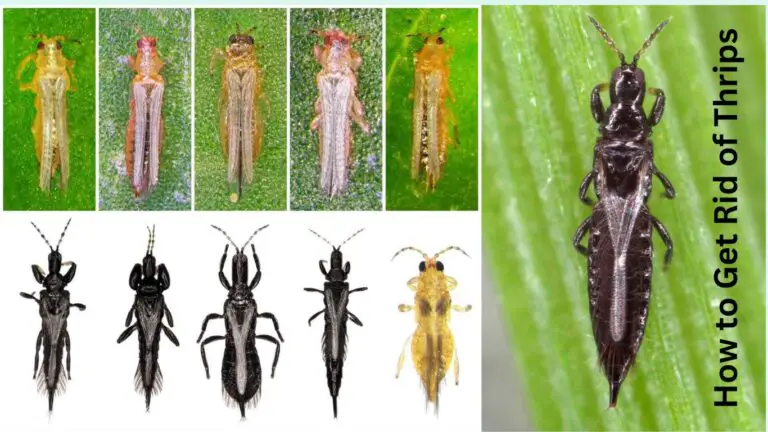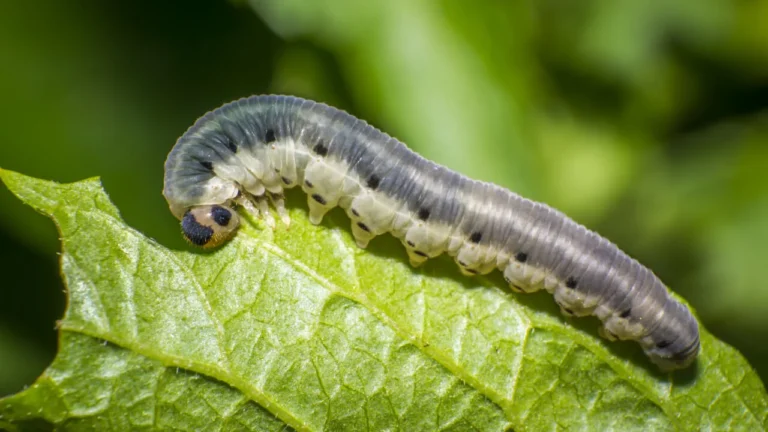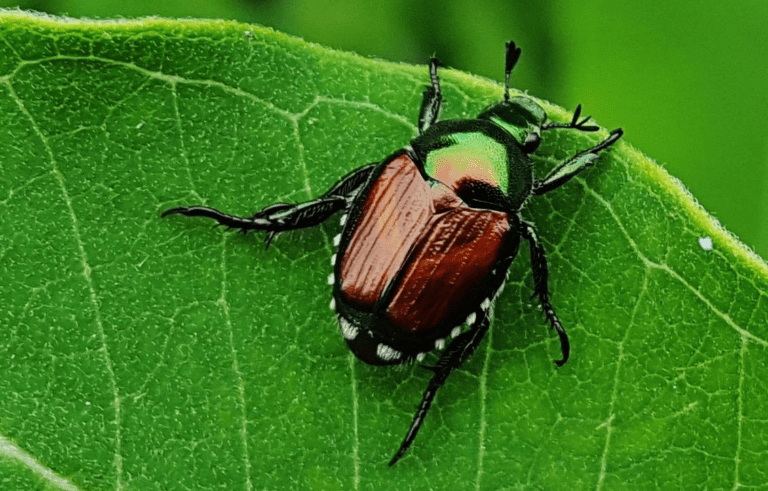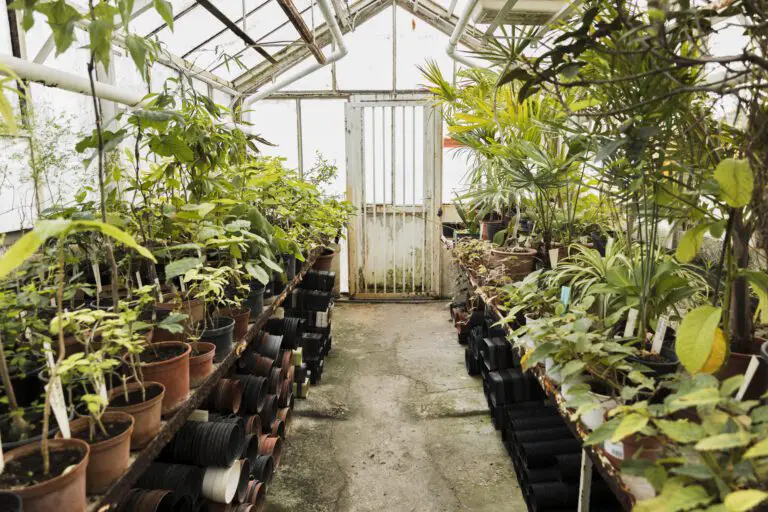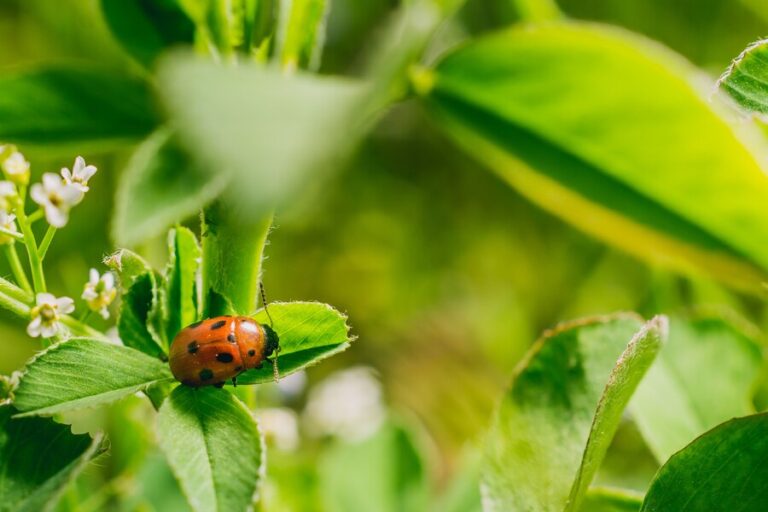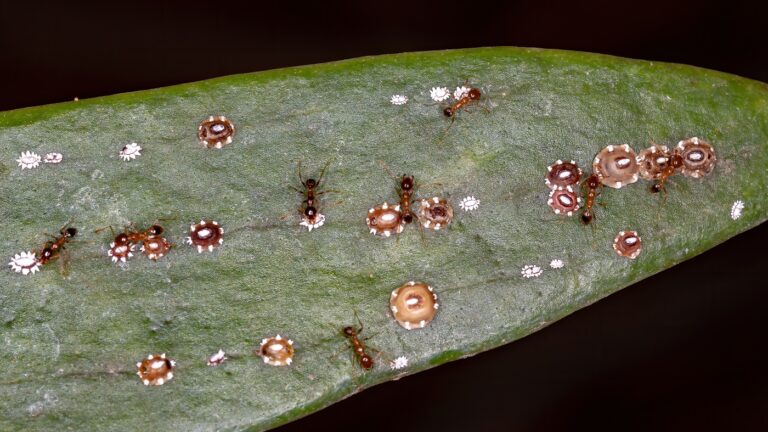Pill Bugs: Is The Best Friends or Foes of Your Garden?
Table of Contents
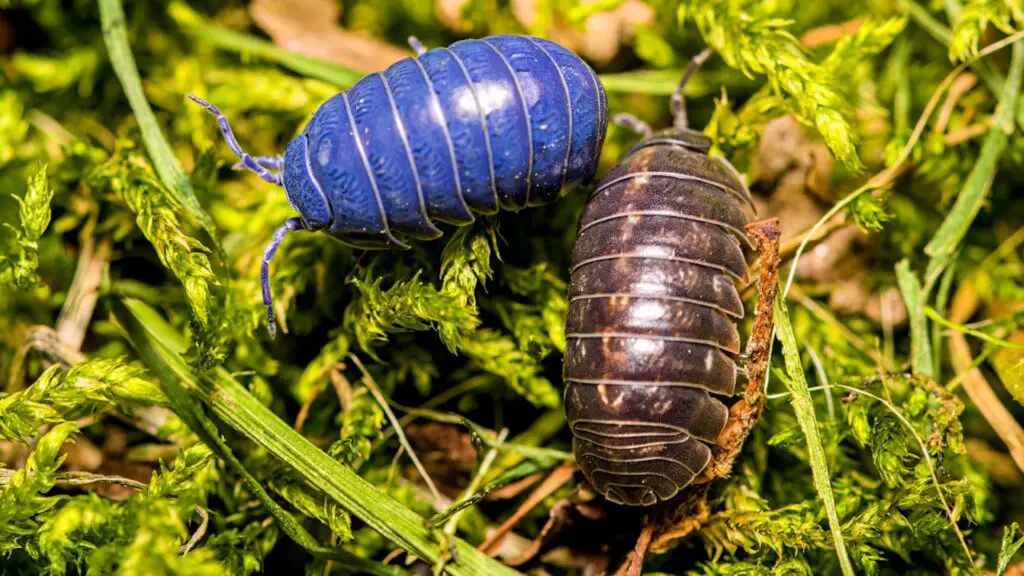
What are pill bugs?
Pill bugs, also known as woodlice or roly-polies, are small, segmented crustaceans that belong to the Armadillidiidae family. They are commonly found in moist environments like gardens, forests, and areas with decaying organic matter. They have a distinct oval-shaped body, with a hard exoskeleton and seven pairs of legs. These fascinating creatures are grayish-brown in color and measure around 1.5 cm in length.
What makes pill bugs unique is their ability to roll into a tight ball when they feel threatened, protecting their soft underbelly. This defensive behavior gives them the nickname “roly-polies.” While they may resemble insects, they are actually more closely related to crabs and lobsters due to their evolutionary lineage. They prefers darkness and moisture, often dwelling under rocks, fallen leaves, or logs. They play an essential role in the ecosystem, performing valuable functions in the garden and aiding in nutrient cycling.
• Pill bugs are small, segmented crustaceans belonging to the Armadillidiidae family.
• They are commonly found in moist environments such as gardens, forests, and areas with decaying organic matter.
• Pill bugs have an oval-shaped body, a hard exoskeleton, and seven pairs of legs.
• They are grayish-brown in color and measure around 1.5 cm in length.
• Pill bugs have the unique ability to roll into a tight ball when they feel threatened, protecting their soft underbelly.
• This defensive behavior has earned them the nickname “roly-polies.”
• Despite their appearance resembling insects, are actually more closely related to crabs and lobsters due to their evolutionary lineage.
• These creatures prefer darkness and moisture, often dwelling under rocks, fallen leaves, or logs.
• bugs play an essential role in the ecosystem by performing valuable functions in the garden and aiding in nutrient cycling.
The role of bugs in the ecosystem
Pill, also known as woodlice or roly-polies, play a crucial role in the ecosystem as decomposers. These small crustaceans feed on decaying plant matter, such as dead leaves and organic debris, breaking it down into smaller pieces. By doing so, pill contribute to the process of decomposition, helping to recycle nutrients and return them to the soil.
In addition to their role in nutrient cycling, pills also serve as a valuable food source for other organisms in the ecosystem. Many animals, including birds, toads, and predatory insects, rely on pill bugs as a protein-rich meal. In this way, pill play a vital role in the food web, providing energy and sustenance for higher trophic levels. Their abundance and availability make them an attractive food source for a variety of animals, contributing to the overall balance and stability of the ecosystem.
bugs as decomposers in the garden
Pill , scientifically known as Armadillidium vulgare, play a significant role as decomposers in the garden ecosystem. These tiny, crustacean-like creatures have a voracious appetite for decaying organic matter, such as leaves, dead plants, and other organic debris. As they consume these materials, they break them down into smaller pieces, accelerating the process of decomposition. This process, known as fragmentation, not only aids in the recycling of nutrients but also helps to create a more nutrient-rich soil for other plants to thrive.
In addition to their decomposition abilities, pill bugs also help to enhance soil quality through their excrement. Their waste, known as frass, is rich in organic matter and nutrients that are essential for plant growth. As pill bugs move through the soil, they inadvertently contribute to its aeration and drainage, allowing plants’ roots to access oxygen and water more effectively. Their constant burrowing and tunneling activities help to improve the structure of the soil, making it easier for plant roots to penetrate and establish themselves.
The benefits of pill bugs in your garden
Pill bugs, also known as woodlice or roly-polies, may not be the most glamorous insects in your garden, but they play a crucial role in maintaining a healthy ecosystem. These little creatures are often overlooked, but their presence can bring numerous benefits to your plants and the overall health of your garden.
One of the key benefits of pill bugs is their role as decomposers in the garden. These tiny critters feed on decaying organic matter, such as fallen leaves and dead plant material. By consuming and breaking down these materials, pill bugs help to accelerate the decomposition process, releasing valuable nutrients back into the soil. This nutrient cycling is essential for maintaining the fertility of your garden, promoting healthy plant growth, and ultimately resulting in more abundant harvests.
How pill bugs help with nutrient cycling
Pill bugs, also known as woodlice or roly-polies, play a crucial role in nutrient cycling within the ecosystem. These small, crustacean-like creatures feed on decaying organic matter, such as dead leaves, plants, and even animal waste. As they consume this detritus, pill bugs break it down into smaller particles, facilitating the process of decomposition. This, in turn, releases nutrients back into the soil, making them available for uptake by plants.
The ability of pill bugs to aid in nutrient cycling has significant benefits for gardeners. By assisting in the breakdown of organic matter, these little recyclers contribute to the health and fertility of the soil. As the debris decomposes, it releases essential elements like nitrogen, phosphorus, and potassium. These nutrients are vital for plant growth and development, ensuring that your garden thrives.
In addition to nutrient cycling, pill bugs also enhance soil structure. As they burrow and move through the soil, pill bugs create small channels that improve aeration and water penetration. This allows plant roots to access sufficient oxygen and moisture, promoting healthy plant growth. Furthermore, the excrement of pill bugs, called frass, adds to the organic matter content of the soil, further enriching its fertility.
Pill bugs are fascinating creatures that offer significant ecological benefits in the nutrient cycling process. By actively participating in decomposition, they not only contribute to a healthier garden but also maintain the delicate balance within the ecosystem. Understanding the role of pill bugs in nutrient cycling can help gardeners appreciate and utilize their presence in creating sustainable and thriving gardens.
Do pill bugs harm plants?
Pill bugs, also known as woodlice or roly-polies, are small crustaceans that are commonly found in gardens and other outdoor environments. While they may resemble insects, they are actually more closely related to lobsters and crabs. These fascinating creatures play an important role in the garden ecosystem by acting as decomposers, helping to break down and recycle organic matter.
Despite their beneficial role as decomposers, some gardeners may be concerned about the potential harm pill bugs can cause to their plants. It is true that under certain conditions, pill bugs can feed on the tender shoots and leaves of young plants, causing damage. However, it’s important to note that they typically target plants that are already in a weakened or decaying state. Healthy, robust plants are generally not at risk of significant damage from pill bugs.
In fact, studies have shown that pill bugs can actually benefit garden plants in certain ways. For example, they help with nutrient cycling by breaking down and recycling organic matter, releasing valuable nutrients back into the soil. This nutrient cycling process can promote healthier plant growth and improve soil fertility. Additionally, the feeding activity of pill bugs can help to aerate the soil, allowing for better water infiltration and root growth. So, while they may occasionally nibble on weak or dying plants, their overall contribution to the garden ecosystem is largely positive.
To prevent potential damage from pill bugs, there are several strategies that gardeners can employ. One approach is to promote a balanced garden ecosystem that includes a variety of beneficial insects, spiders, and other predators that naturally control pill bug populations. Creating habitats like rock piles or mulch beds can also provide hiding places for pill bugs and encourage them to stay away from vulnerable plants. Additionally, providing ample organic matter for them to feed on, such as compost or leaf litter, can help to divert their attention from your garden plants.
In conclusion, while pill bugs may occasionally feed on weakened or dying plants, they generally do not pose a significant threat to healthy garden plants. Their role as decomposers and nutrient recyclers can actually be beneficial to the overall health and fertility of the garden ecosystem. By employing preventive measures and promoting a balanced garden environment, gardeners can coexist with pill bugs and harness their positive contributions to create thriving gardens.
Common misconceptions about pill bugs
Pill bugs, also known as woodlice or roly polys, are often misunderstood creatures in the garden. One common misconception about pill bugs is that they are harmful pests that damage plants. However, this belief is far from accurate.
Contrary to popular belief, pill bugs do not feed on living plant tissue. Instead, they are decomposers, playing an important role in breaking down organic matter. These tiny creatures feast on dead plant material, fungi, and decaying organic matter, helping to accelerate the decomposition process. This makes them valuable contributors to the garden ecosystem, as they aid in nutrient cycling and soil enrichment.
Understanding the true nature of pill bugs is essential for any gardener. By dispelling misconceptions and appreciating their role as decomposers, garden enthusiasts can work towards creating a harmonious and balanced ecosystem in their gardens. So, let’s delve deeper into the benefits of having pill bugs in your garden and explore strategies to manage them effectively.
The potential damage caused by pill bugs in the garden
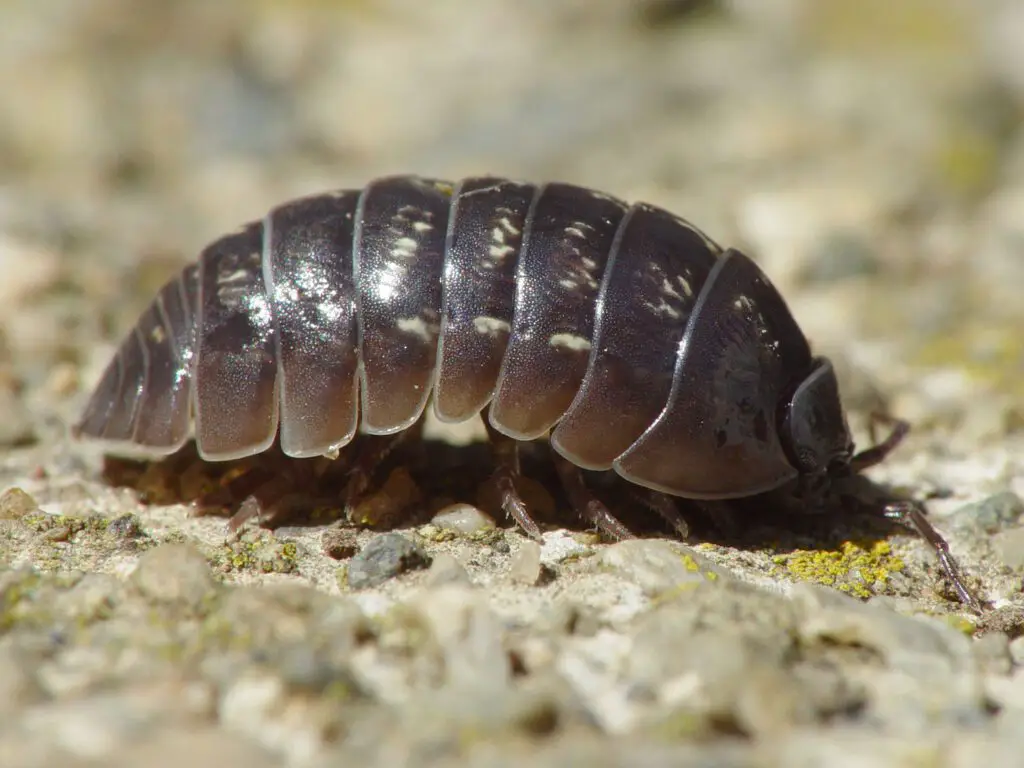
Pill bugs, also known as woodlice or roly-polies, are small terrestrial crustaceans that can be found in gardens and other outdoor areas. While these critters serve an important role in the ecosystem as decomposers, they can potentially cause damage to plants in your garden if their populations become too high.
One of the potential issues with pill bugs in the garden is their tendency to feed on young seedlings and plant roots. As they munch on these delicate parts of plants, they can cause stunted growth and even death in some cases. Additionally, their feeding behavior can create entry points for pathogens, increasing the risk of plant diseases. While pill bugs typically prefer to feed on decaying organic matter, their voracious appetites sometimes lead them to target living plants as an alternative food source.
It is important to note that the potential damage caused by pill bugs in the garden is not typically severe or widespread. In most cases, healthy and established plants can withstand some feeding by these critters without significant harm. However, in situations where pill bug populations are high or where plants are already stressed, the damage can be more noticeable. By understanding the potential impact of pill bugs in your garden, you can take proactive measures to prevent or control their populations and minimize any potential damage they may cause.
Identifying pill bug damage on plants
Pill bugs, also known as woodlice or roly-polies, are often considered harmless little creatures that scurry about the garden. However, their presence can sometimes lead to unwanted damage on plants. Identifying pill bug damage on plants is crucial in order to take appropriate action and prevent further harm.
One common sign of pill bug damage is the formation of irregular holes or notches on the leaves of plants. These pests have a voracious appetite for decaying plant matter, and when their usual food sources are scarce, they may turn to live plants for sustenance. As they munch on tender leaves, they leave behind distinct patterns of damage that can help you identify their presence.
In addition to leaf damage, pill bugs may also feast on the stems, roots, and even fruit of plants. This can result in wilting, stunted growth, and in severe cases, the death of the plant. It is important to closely inspect your plants for any signs of pill bug infestation, especially if you notice a decline in their overall health or vitality.
By promptly recognizing and addressing pill bug damage, gardeners can take proactive measures to protect their plants and maintain a thriving garden. Stay tuned as we explore effective strategies to prevent pill bug damage and find the right approach for managing these critters in your garden.
Strategies to prevent pill bug damage in your garden
To prevent pill bug damage in your garden, there are several strategies you can implement. Firstly, it is crucial to maintain proper garden hygiene. Clean up any garden debris, including fallen leaves and decaying plant matter, as pill bugs are attracted to these damp and decomposing materials. Regularly cleaning your garden will not only discourage pill bugs from making your garden their home but will also prevent the spread of diseases and pests.
Another effective strategy is to provide a barrier between your plants and the pill bugs. This can be done by creating a physical barrier, such as using plastic or metal collars around individual plants or employing insect netting to cover garden beds. By implementing these barriers, you can restrict pill bug access to your plants and reduce the risk of damage. Additionally, you can consider adjusting your watering practices. Pill bugs thrive in moist environments, so reducing excessive watering can help deter them from your garden. It is important to find a balance, as plants still need sufficient water, but ensuring proper drainage and avoiding overwatering can help discourage pill bug infestations.
By implementing these strategies, you can minimize pill bug damage in your garden and enjoy a thriving and healthy plant environment.
Here’s a table summarizing key information about pill bugs (also known as woodlice or roly-polies):
| Aspect | Description |
|---|---|
| Scientific Name | Armadillidiidae (Family) |
| Common Names | Pill bugs, woodlice, roly-polies, sow bugs |
| Physical Characteristics | Small, segmented, oval-shaped crustaceans with a hard exoskeleton. Can roll into a ball for protection. |
| Habitat | Moist environments such as gardens, leaf litter, under rocks, and decaying organic matter. |
| Diet | Detritivores feeding on decaying plant material, organic matter, and small insects. |
| Role in Ecosystem | Important in decomposition, breaking down organic matter and returning nutrients to the soil. |
| Reproduction | Unique reproductive strategy called “marsupial” care where females carry eggs in a pouch (brood pouch) on their underside. |
| Behavior | Nocturnal; exhibit negative phototaxis (avoid light). They are generally scavengers and prefer humid conditions. |
| Defense Mechanism | Ability to roll into a tight ball, protecting their soft ventral side. Offers protection against predators. |
| Lifespan | Typically, one to two years, but may vary depending on environmental conditions and predation. |
| Social Structure | Generally solitary, but may aggregate in favorable conditions. |
| Beneficial or Harmful | Generally considered beneficial in gardens as they aid in breaking down organic matter, but can damage young plants in large populations. |
| Interesting Fact | Despite their appearance and nickname, pill bugs are not insects but belong to the crustacean suborder Isopoda. |
This table provides a concise overview of various aspects of pill bugs, including their scientific classification, physical characteristics, habitat, behavior, and role in ecosystems.
Natural ways to control pill bug populations
One natural way to control pill bug populations in your garden is by creating a balanced and diverse ecosystem. This can be achieved by incorporating a variety of plants that attract and support natural predators of pill bugs. For example, certain plants such as mint, dill, and fennel are known to attract beneficial insects like ground beetles, spiders, and centipedes, which are predators of pill bugs. By providing these predators with a suitable habitat and a diverse food source, you can encourage their presence in your garden and help control the pill bug population.
Another effective method to naturally control pill bug populations is by practicing proper garden hygiene. Pill bugs are attracted to moist and decaying organic matter, so it’s important to remove any debris and regularly clean up fallen leaves or decaying plant material. By maintaining a clean garden environment, you can minimize the availability of food and shelter for pill bugs, making your garden less attractive to them. Additionally, avoiding overwatering your plants can help reduce excess moisture that pill bugs thrive in, thereby decreasing their population.
The importance of balance in your garden ecosystem
A well-balanced garden ecosystem is essential for the health and vitality of your plants. By maintaining a harmonious relationship between the different components of your garden, you can create an environment where plants can thrive and pests are naturally controlled.
One of the key elements in achieving balance is understanding the role of various organisms, such as pill bugs, in the ecosystem. Pill bugs, also known as sow bugs or woodlice, may often be misunderstood and mistakenly viewed as pests. However, these small crustaceans play an important role as decomposers in the garden. They break down dead plant material, turning it into organic matter that enriches the soil. This process, known as decomposition, is vital for nutrient cycling and promotes a healthy soil structure.
Creating a pill bug-friendly garden
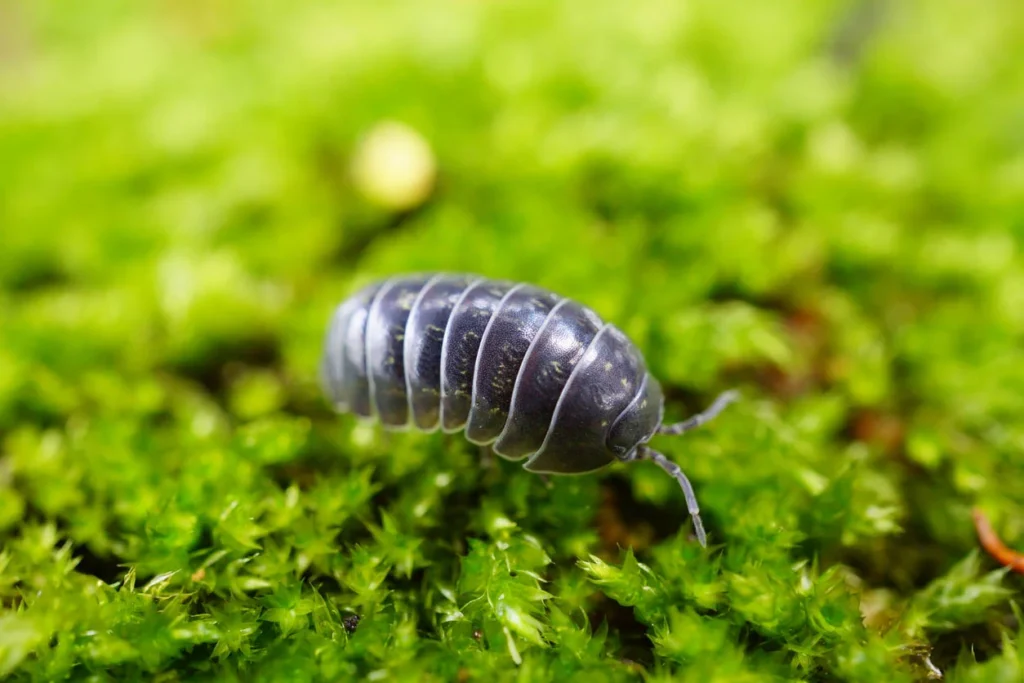
To create a pill bug-friendly garden, it’s important to understand the needs and preferences of these fascinating creatures. Pill bugs, also known as woodlice or sowbugs, are arthropods that belong to the crustacean family. They thrive in moist environments and are commonly found in gardens, where they play a beneficial role in the ecosystem.
One key way to attract pill bugs to your garden is to provide them with suitable habitats. These critters prefer areas with plenty of organic matter, such as leaf litter, decaying wood, and compost. Creating piles of fallen leaves or incorporating wood chips into your garden beds can provide the ideal environment for pill bugs to thrive. Additionally, ensuring that your garden has adequate moisture levels, either through regular watering or the use of mulch, will make it more enticing for pill bugs.
Finding the right approach for pill bug management in your garden
Effective pill bug management in your garden requires a balanced approach that takes into consideration the needs of both your plants and the ecosystem as a whole. While it can be tempting to immediately reach for chemical pesticides or traps to control pill bug populations, it’s important to consider more environmentally friendly alternatives that promote long-term sustainability.
One strategy for managing pill bugs in your garden is creating a physical barrier around vulnerable plants. This can be achieved by placing a layer of copper tape or diatomaceous earth around the base of plants. Copper tape works by emitting a small electric charge when in contact with the pill bugs, deterring them from crossing the barrier. Diatomaceous earth, on the other hand, acts as a desiccant, drying out the pill bugs and causing them to perish. Both methods are safe for plants and other beneficial garden dwellers.
How do pill bugs contribute to the ecosystem?
Pill bugs play a vital role as decomposers in the ecosystem by breaking down organic matter and contributing to nutrient cycling.
Do pill bugs cause harm to plants in the garden?
While pill bugs primarily feed on decaying plant material, they may occasionally damage seedlings or young plants by consuming tender leaves or roots.
What are some common misconceptions about pill bugs?
One common misconception is that pill bugs are harmful pests, when in reality, they are generally beneficial to the garden ecosystem. Another misconception is that pill bugs are insects, while they are actually crustaceans.
How can I identify damage caused by pill bugs on my plants?
Pill bug damage typically appears as irregular holes or notches on leaves, stems, or roots. The affected areas may also show signs of decay or rot.
What strategies can be employed to prevent pill bug damage in the garden?
To prevent pill bug damage, you can create physical barriers such as copper tape or diatomaceous earth around vulnerable plants. Additionally, maintaining a balanced garden ecosystem can help keep pill bug populations in check.
Are there natural ways to control pill bug populations?
Yes, there are natural methods to control pill bug populations. Some options include introducing predators like ground beetles or birds, using organic insecticides like neem oil or insecticidal soap, or implementing cultural practices like removing excess organic matter or debris.
How can I create a pill bug-friendly garden?
To create a pill bug-friendly garden, provide ample organic matter for them to feed on, such as compost or leaf litter. You can also incorporate hiding spots like rocks or logs to provide shelter for pill bugs.
What is the importance of balance in the garden ecosystem?
Balance in the garden ecosystem is crucial as it allows for a healthy relationship between pests and beneficial organisms. Too few or too many pill bugs can disrupt this balance, so it’s important to maintain appropriate populations.
How can I find the right approach for pill bug management in my garden?
The right approach for pill bug management will depend on various factors, such as the severity of the infestation, the specific plants being affected, and personal preferences. It is best to consider a combination of prevention, natural control methods, and understanding the benefits of pill bugs before deciding on a management approach.


